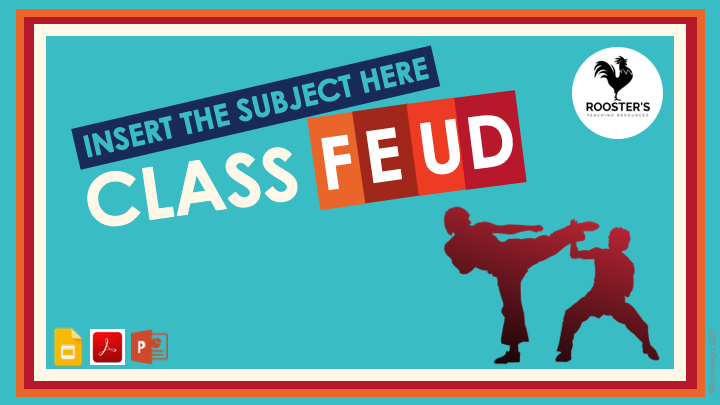
Teaching Special Needs Students in the Regular Classroom

With approximately 15% of students identified as special needs, it's a necessity that the regular classroom teacher finds ways to meet the needs of these students. The good news is that the best practices of working with special needs students are simply sound teaching practices that are bound to help all students. This post, written in collaboration with veteran special education teacher Ruth McEwen, gives advice and tips based on years of experience on teaching special needs students in the regular classroom.
From my readings and experience with people with disabilities, it is not so much the disability that is painful for the individual but more so the lack of acceptance. No one wants to be made fun of or laughed at. Everyone wants to be included. Creating a classroom climate in which all students are accepted and respected is foundational to working with all students, especially for the student with special needs. If there were only one piece of advice I could give on teaching special needs students in the regular classroom it would be this – truly believe in them and their ability to succeed. This belief will naturally relay the acceptance, love and respect you have for them. Your students will feel it and this will help them thrive. Furthermore, when a teacher has the attitude of love and acceptance towards all of his or her students, the students will generally follow suit. Of course, there is more to it that just a belief, but this is the foundational starting point.
When working with a special needs student, make sure you are familiar with their IEP or any other education plan they may have. You are obligated to know the recommendations for your special needs student. If you have a special education staff, consult them. Also, consult the parents, your administrator, and even former teachers. These individuals are key to gaining a good understanding of your special needs student and may have a wealth of information and resources to help. When time permits, educate yourself on special needs. Read blogs, books, attend professional workshops; get access to the information and opportunities available to you to build your expertise and your craft.

“Begin with the end in mind." - Stephen Covey

A colleague of mine recently directed me to an interesting Tweet posted by Jana O’Conner. In this tweet, Ms. O’Conner explains the various types of memory, including Non-Verbal Working Memory. O’Conner explains that not only does Non-Verbal Working Memory help a person remember images like where you might have parked your car, but it also helps you see the future. Some people with ADHD and ASD have impaired Non-Verbal Working Memory. This means that they can not imagine what the final product of an assignment might look like. Your neurotypical person sees the end in mind and then works backwards; they can imagine where to start. However, your ASD or ADHD students could be at a loss.
An easy solution is to give and example of the final product, e.g., a final copy of a book report, a completed science project board. This helps set clear expectations for everyone, and is simply good teaching. Grading rubrics are also helpful as they are specific. Giving clear expectations that are verbal, visual and written may be necessary for your special needs student and are sure to be helpful to everyone in your class.
Get your FREE Review Game Template!

Subscribe & receive an engaging Family-Feud Style Review Game with directions, score cards, game question templates & built-in timers, adaptable for any upper elementary through high school class!
Visual Note-taking which combines words with images for verbal and text-based information is another helpful strategy for students, especially those with special needs. Research supports this method and shows that it can improve memory and requires higher-level thinking skills leading to a more advanced level of understanding. Combining this with the classic Cornell note-taking style can be a great help to everyone in your class.
Did you know that it is estimated that 15% of the population has some degree of dyslexia?

Did you know that it is estimated that 15% of the population has some degree of dyslexia? The Orton-Gillingham Approach, which has been around for almost a century, is one methodology that is gaining tremendous attention because of its success. Making the learning multi-sensory or VAKT ( visual, auditory, kinesthetic, and tactile) is at the heart of this approach. In other words, engage as many senses as you can when you are teaching. This will certainly help not just your dyslexic students but everyone.
The approach also incorporates Structured Literacy or systematic, explicit and intensive teaching/learning. When it comes to learning to read, the teaching needs to be VERY explicit - ‘a’ says /a/, ‘p’ says /p/ and ‘oi’ says /oi/, etc. Following that is review, teach and review, over and over, going back to previously learned lessons as new concepts are also taught. The big idea is that the teaching is systematic and intensive - no student guessing or skipping to the end of the sentence to guess at an unknown word.
Reading strips are another simple tool that can help. These are commercially made and can be purchased, or they can be hand made. Even a black strip of card stock can help a dyslexic reader keep on track.
Sometimes teachers will find individuals placed in their classroom who simply are not ready for grade-level material. Group work can be quite helpful. In a heterogenous group, a struggling student will learn from others. A ”Go To Binder” can also be useful. This could be a physical collection of work for a struggling student who simply can not do the task at hand or for the very advanced student for whom the task at hand is too easy. Electronic Escape Rooms have become very popular and can be customized to individual needs. Of course, utilizing the help of an aide or of a volunteer for one-on-one work with students who need extra support can be of tremendous help.

Teaching special needs students in the regular classroom requires extra thought and effort, but for this very reason it will quite likely make you a better teacher for all of your students.

Keep in mind that with the right attitude, your special needs students benefit everyone. Students with disabilities add to the diversity of the classroom. They can even bring extraordinary intellectual and social strengths. Take, for example, your autistic student who remembers every date or a child with Downs who displays marvelous joy. There are also disabled individuals who serve as an inspiration to us all given their courage to overcome. If these students require assistance from their peers, they help their peers solidify their knowledge and give them the opportunity to give and develop leadership skills and empathy. Teaching special needs students in the regular classroom requires extra thought and effort, but for this very reason it will quite likely make you a better teacher for all of your students.
What tips and advice do you have for teaching special needs students in the regular classroom?
©Tuiolosega 2019
